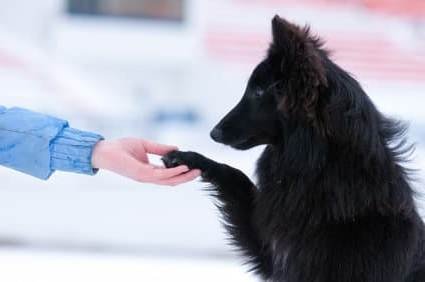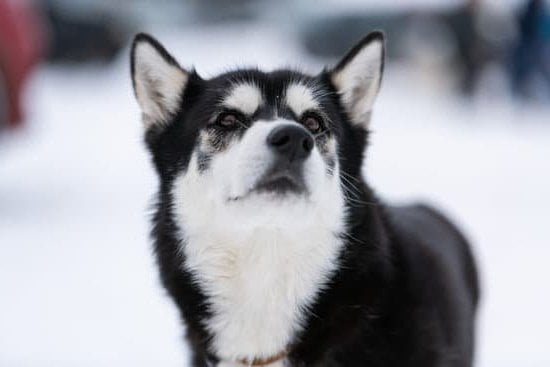Introducing Demonstration Dogs
Demonstration dogs are a type of dog trained for use in the classroom as well as in promotional events. They provide an additional element to a trainer’s teaching skillset and make it possible to provide examples of proper techniques while training a real-life dog. Demonstration dogs also allow students to observe and practice techniques on canines that have already been trained, instead of attempting them on their own pet first which could be dangerous if done incorrectly. In addition, demonstrating proper technique can show potential clients that the trainer is an experienced professional with a wealth of knowledge and expertise.
Generally speaking, any breed of dog may be used as a demonstration dog; although there are some considerations that should be taken into account before selecting the right animal for the job. The first factor is size: since demonstration dogs will often involve classroom settings, or busy public spaces, such as pet expositions, then size does matter. Larger breeds cannot fit comfortably into smaller rooms or other spaces, so larger sizes should be avoided when looking for the perfect demonstration dog. Other qualities to consider include energy level and trainability: since these dogs will often showcase different behaviors for the purpose of instruction, higher-energy personalities may react unpredictably in these situations which can cause distractions from the tutorial material being provided by trainers. Selecting both high-energy and low-energy dogs allows trainers to demonstrate more easily how to work with both types successfully. Lastly, highly trainable breeds tend to respond faster and better suit teaching purposes – so certain popular purebreds like Labrador Retrievers, German Shepherds, Golden Retrievers and Border Collies are all valuable training assets in this regard!
Characteristics of A Good Demonstration Dog
A good demonstration dog for training sessions should have specific characteristics. First and most importantly, they need to have the right temperament. They should be friendly, sociable and easy-going, but also alert and focused in working situations. They need to be intelligent in order to learn new behaviors quickly and with ease. Additionally, they must have a willingness to work and remain engaged during the training session.
The right breed of dog can make or break a successful training session, so doing your research is important when choosing a demonstration dog. Breeds that generally do well as demonstrations are Labradors, German Shepherds, Golden Retrievers, Beagles and Border Collies. These breeds all possess the temperaments mentioned above and are considered active dogs which makes them more suitable for activities such as agility training or obedience classes where focus is key.
Having an experienced handler of the chosen breed is also beneficial when selecting a demonstration dog for a training session. This allows for better understanding between the two of them – allowing for greater accuracy of commands through nonverbal cues that only someone familiar with that particular breed would understand.
Dog Breeds Suited For Demonstration Training
German Shepherd: German Shepherds are naturally loyal, confident and possess strong protective instincts, which makes them an ideal breed for protection training. They are intelligent and learn quickly, making the training process much easier.
Labrador Retriever: Labradors are one of the most popular breeds in the world. They’re patient and can learn a diverse range of tricks, making them perfect for demonstration lessons. Furthermore, they’re excellent therapy dogs too!
Pug: Pugs make great demo training dogs due to their intelligence, attentiveness and natural obedience. They are also known for being incredibly social with both people and other animals, making them useful in demonstrations involving owners and their pet’s interactions with each other.
Poodle: Poodles have a wide variety of sizes, which is great because it allows trainers to have the right size dog for any given situation. Professional trainers look for poodles specifically because they are very eager to please and have consistently proven themselves as great companions during demonstration lessons.
Training An Effective Demonstration Dog
When selecting a suitable dog breed for a demonstration training dog, the most important factor is to choose one that is calm and gentle to ensure that all participants in the demonstration are safe. Breeds such as Bernese Mountain Dogs, Golden Retrievers and Labrador Retrievers are often very well suited to this type of work. They typically have an even temperament, intelligence, and can be easily trained with positive reinforcement methods.
Once you have selected the right breed for your demonstration training dog, it’s time to start teaching her commands. First of all, use only positive reinforcement methods in your training sessions. This will create a good foundation for your relationship with the dog and make it easier for her to learn further commands in the future. Start off by teaching basic commands such as ‘sit’ ‘stay’ ‘heel’ etc., before progressing onto more complicated ones such as retrieving objects or playing tricks. When teaching each command, give verbal cues first, followed by body language and finally by treats when the desired behavior has been achieved – this will help to reward correct behaviors while discouraging improper ones.
Behavioral correction should also be used during demonstrations in order to ensure safe practices are maintained at all times. Ensure that any corrections are carried out calmly using a consistent approach and that they focus on direct replacement behaviors as opposed to punishment techniques (i.e., providing alternatives instead of scolding). For example, if you want your demonstration pet to stay in one place during an activity, provide him with a treat (or toy) when he performs the action correctly rather than scolding him if he moves away from his spot uninvited.
Finally, remember that practice makes perfect! Keep up regular sessions and continually reinforce previously-learned commands with treats or other rewards – this will help keep both you and your pet happy!
Conclusion
When choosing a demonstration training dog, there are many different breeds and characteristics that should be taken into consideration. Trainer should look at traits such as size, friendliness and obedience when making their choice. Some good breeds for demonstrations might include Labrador Retrievers, Golden Retrievers, German Shepherds and Cocker Spaniels. Such dogs are typically very friendly, obedient and have an even temperament, traits which make them ideal for working with people. Additionally, it is important to remember that the most successful demonstrations require trusting relationships between the handler, the dog, and the audience members – so picking a demonstration dog who will take cues from its handler/trainer and be comfortable with interacting with strangers is vital. Ultimately, having the right breed of dog in your demonstration can bring extra enthusiasm to your training session, keep everything running smoothly and make your job much easier!

Welcome to the blog! I am a professional dog trainer and have been working with dogs for many years. In this blog, I will be discussing various topics related to dog training, including tips, tricks, and advice. I hope you find this information helpful and informative. Thanks for reading!





